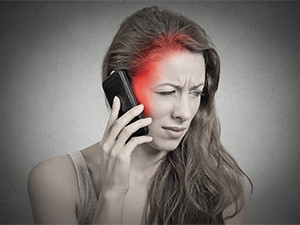
Although there is little hard evidence that WiFi network and other radio wave "pollution" is harmful to health, as the proliferation of WiFi networks continues, health is going to be a major concern.
So says Merom Harpaz, head of sales for GoNet Systems, who points out that the radio wave pollution should be reduced to ease consumer concerns.
"Health is going to become a major concern, especially as more WiFi networks are installed in schools," says Harpaz. "Parents may not be worried about their health, but they will likely think twice when it comes to the radio waves their children get exposed to during the school day."
In an e-book published recently, GoNet Systems, a provider of WiFi solutions, looks at the proliferation of WiFi networks and cellular coverage, and concludes that users have a legitimate interest in reducing the volume of radio waves.
"With almost every communication and computing function going wireless, consumers and device users are understandably concerned about the effects of all those radio waves surrounding us almost anywhere we go," Harpaz notes.
Radio waves
And while there are anecdotal reports of individuals affected by heavy mobile phone use, no research has been able to authoritatively establish whether the "radiation" connected with wireless transmission of voice and data can negatively affect our health, says GoNet Systems in the e-book.
But as users keep their smartphones with them at all times, and spend large amounts of time in areas where cellular and WiFi networks are in heavy use, they clearly are exposed to much greater amounts of radiation now than they were five or more years ago, it adds.
With the proliferation of WiFi networks, both public and private, and the rapid growth in the number of devices that connect via WiFi networks, many mobile phones used by consumers are now designed to connect first to an available WiFi network - since that is the most cost-effective method of communication - and only connect to the cellular network if there is no WiFi connectivity available, GoNet notes.
"So the fact remains that there are radio waves all around us, at almost all times, particularly in dense urban areas," Harpaz says. "While there may not be any clear proof that this has harmful health effects, most users and consumers would agree it would still be good to reduce the volume of this radiation wherever possible."
Beamforming approach
According to GoNet, a typical WiFi installation consists of omnidirectional antennas, which are constantly transmitting signals and looking for signals from connected devices. This means at all times, there is radiation throughout the coverage area.
The company believes that with a beamforming approach, radiation exposure is limited to a very short time. The beamforming system also uses omnidirectional antennas, but only to establish the location of a signal, it explains.
Beamforming is a signal processing technique used to control the directionality of the transmission and reception of radio signals.
"Once that signal is found, the signal transmission is then handled via a concentrated beam. The equipment instantly detects the transmitted packet's direction of arrival and locks the antenna array on that signal. The WiFi access points then create a beam for every packet, a beam that is directed towards the user being served," Harpaz elaborates.
"It is a focused approach that enables optimal performance, and reduced radiation, when compared with the use of omnidirectional access points that are transmitting and receiving in all directions.
"The energy generated in a beamforming WiFi system is concentrated in the direction of the client device. For only a fraction of a second, the user is exposed to the energy wave, but 99% of the time, he or she is not affected by any radiation. That contrasts with a typical WiFi system, in which the user is exposed," he concludes.
Share